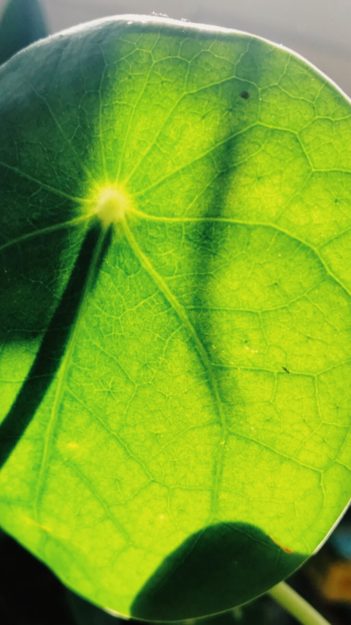
I’ve found it suits me better not to announce or necessarily even plan my occasional breaks from social media, but rather to let them happen organically and reflect on them afterward. This one wasn’t a total break, since I did post snippets to IG Stories almost daily, and I spent a little more time on Twitter than usual. (Which still isn’t much. I have to take Twitter in carefully timed microdoses these days.) But for two weeks, no Instagram grid posts, no captions, no FB, no Bonny Glen, and I put my Patreon on pause for the month of August.
None of this (except the Patreon pause) was planned; I was just busy elsewhere. WB had surgery at the end of July (went well, good recovery); Jane moved home from California around the same time. This weekend we celebrated Rose’s 21st birthday. (!) In between: work, long walks, a book or two, lots of embroidery. A small party where I found ‘my’ karaoke song (i.e. one I can nail). Or maybe that was before the surgery; late July and early August melted into each other.
I took Holly Wren Spaulding’s free mini poetry challenge this past week and welcomed her infusion of gentle insight into my morning creative practice, a practice which continues to be the most satisfying and nourishing gift I can give myself: this quiet, screen-free dawn hour, alone with a few good poems, a notebook, a fresh pen. I spent a lot of time with Kimiko Hahn this summer—Mosquito and Ant; Toxic Flora; Narrow Road to the Interior. Also a lot of Japanese haiku in translation. Huck wakes during the end of my writing time and staggers sleepily into my studio to snuggle into the gray armchair with me, tucked under our poppy blanket. We read poems and watch the sky change. Even when I’m tired, it’s delicious.

I also spent a lot of time in the garden, enjoying the late-summer lushness! Hummingbirds in the hyssop; bees industrious in the fennel and coneflower. A few tiny strawberries, a handful of cherry tomatoes. Asters spangling the porch wall with blue stars. A strange crow with a coppery head raiding the suet feeder each morning. My neighbor’s asparagus bed now a forest: airy green treetops festooned with apple-red berries. An abundance of small noticings. A necessary quiet.

I think this is my favorite photo of the hundreds (thousands? eek) I’ve taken since we moved to Portland. I posted it on Instagram with a riff on the much-beloved William Carlos Williams poem:
so much depends
upon
a red garage
door
glazed with rain
water
beside the pink
dogwood
And while I’ve appreciated “The Red Wheelbarrow” for many years, I feel like I get it in a deeper way now. There’s a feeling I get when I look at gray-blue clouds piled over a blue mountain, or sunlight shining through black tree branches, or the evening sky shot through with light and shadows—a feeling like Emily Starr’s flash, you know?
I started writing this post last week (thus the title) and didn’t have a chance to come back and finish until now. It’s Monday morning, early, kids still in bed, sky like mother-of-pearl. I’ve been awake since before dawn, dunno why. The enthusiastic birds outside my window, probably. I contemplated getting up and taking my walk early—I usually go in the evening, during golden hour if I can possibly manage it—but I opted to lie in bed and watch the walls turn from gray to blue. Got up around six and slipped out to the back yard to smile over our little garden like a proud mother. We have radishes coming up in the garden, and my first strawberry is very-nearly-almost ripe.

Anyone remember my big long strawberry-rhapsody post from a million years ago?
Eighteen dollars: less than four times the amount we paid for last night’s gone-in-a-flash berry feast. And now I get a steady stream of berries from June to September. Like the wantons they are, the plants have multiplied with abandon: we must have hundreds of individual strawberry plants now, each fertile and heavy with fruit in its season. I am a neglectful gardener (just ask my neighbors) and I do nothing to baby these plants. I ignore them. I don’t do chemicals and I can’t be bothered with fertilizer or compost. We have terrible soil: thick red Virginia clay that is not at all disposed to encourage root growth. The kids’ caterpillar farm (fennel and rue) springs up right from the middle of the strawberry bed. The strawberries don’t care. They thrive on adversity. They scoff at the miserable growing conditions; they sneer at the crabgrass; they launch themselves over the retaining wall and bloom in mid-air. They send exploratory runners into the lawn, and Scott mows right over them. For this callous treatment, they reward us with a riotous, bountiful harvest. You can’t beat us down, they proclaim. You only encourage us to flaunt our fertility. We will, we must, reproduce! We will fill the world! Let those fat, bland, expensive greenhouse-grown excuses for berries beware! We are sun-warmed and sweet. We will make you weep for joy.
There is no modesty in strawberries.
And there was no brevity in 2005 me, apparently. 😉 Oh for the days of big long text-heavy posts!
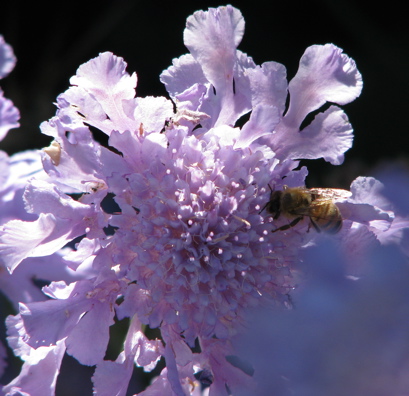
A book arrived yesterday that made me giddy. Scott saw me squealing over it and wanted to know what all the excitement was about. I tried to think how best to explain it to him.
“Okay, imagine that John Lennon and Elvis Presley were pen-pals. Say they had a lively correspondence, letters flying back and forth for years and years. Now imagine that this book is a collection of those letters.”
He raised his eyebrows. “Who are they really?”
I sighed happily. “Katharine White and Elizabeth Lawrence.”
Scott: “Um…?” But he knows me well. “Gardening?”
“Yes. Only my two favorite gardening writers EVER.”
“Like you had to tell me that.”
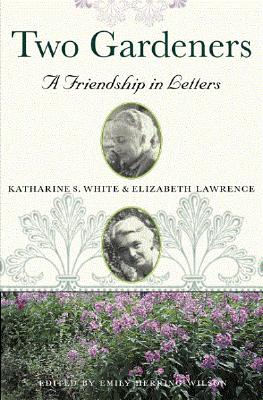 Everything about this book makes me smile. Editor Emily Herring Wilson’s introduction begins,
Everything about this book makes me smile. Editor Emily Herring Wilson’s introduction begins,
Gardeners are often good letter writers, and whether they write to describe what’s blooming today or to remember a flower from childhood, their letters are efforts to preserve memory. After they have put away tools in the shed, they write letters as a way to go on working in the garden. Because it is impossible to achieve the kind of perfection they dream of, they try to come to terms with their dreams by talking back and forth about their successes and failures….
Katharine S. White was, of course, the esteemed New Yorker editor whose occasional gardening columns are collected in the first horticultural tome ever to win my heart: Onward and Upward in the Garden. I had only to read her opening essay, the famous 1958 column that both celebrates and gently mocks gardening catalogs, critiquing them like works of literature, to know that here was a kindred spirit. Evidently Miss Elizabeth Lawrence, a knowledgeable and enthusiastic Southern garden writer (whose Gardening for Love I quoted the other day), felt the same spark of recognition. In May of 1958, Elizabeth wrote Katharine White a letter to say how much she’d enjoyed the New Yorker column, adding,
I asked [my friend] Mrs. Lamm if you were Mrs. E. B. White, and she said you were. So please tell Mr. E. B. that he has three generations of devoted readers in this family. My mother’s favorites were the one about leaving the mirror in the apartment vestibule, and the one about homemade bread. My niece adores Charlotte’s Web.
The mirror and bread essays (“Removal” and “Fro-Joy”) can be found in E. B. White’s One Man’s Meat, and if you know me at all, you know this sort of interwoven rabbit-trailing fills me with utter glee.
That first letter from Elizabeth to Katharine is fun, folksy, and smart, full of suggestions for other garden catalogs Mrs. White might enjoy. Several of her recommendations became fodder for subsequent ‘Onward and Upward’ columns. For nearly twenty years, until Katharine’s death in 1977, the two women wrote back and forth. So far, I have only read the first two of these letters. There must be hundreds of them in this book. I’m positively aflutter over the idea of such riches.
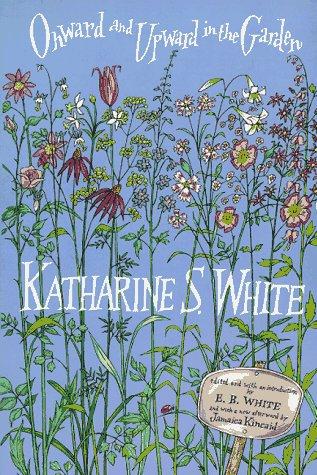 I didn’t get farther than the first letter last night because I found I had to interrupt it in the middle and go reread the Katharine White essay. Which led to another googlesome rabbit trail to see if any of the old catalogs she references can be read online. The Roses of Yesterday and Today catalog, whose author at the time, a Mr. Will Tillotson, had an “informative and occasionally rhapsodic” style that charmed Mrs. White no end, is still around—though Mr. Tillotson died in 1957, a fact Mrs. White adds in a sorrowful postscript at the end of her essay. The 1959 catalog seems to have been reprinted some years back. In her essay, Katharine quotes extensively from the 1955 and 1956 catalogs, which she says she borrowed from a friend, adding, “I must not keep them long, because though she has never bought a Tillotson rose, she reads Tillotson every night before she goes to sleep.”
I didn’t get farther than the first letter last night because I found I had to interrupt it in the middle and go reread the Katharine White essay. Which led to another googlesome rabbit trail to see if any of the old catalogs she references can be read online. The Roses of Yesterday and Today catalog, whose author at the time, a Mr. Will Tillotson, had an “informative and occasionally rhapsodic” style that charmed Mrs. White no end, is still around—though Mr. Tillotson died in 1957, a fact Mrs. White adds in a sorrowful postscript at the end of her essay. The 1959 catalog seems to have been reprinted some years back. In her essay, Katharine quotes extensively from the 1955 and 1956 catalogs, which she says she borrowed from a friend, adding, “I must not keep them long, because though she has never bought a Tillotson rose, she reads Tillotson every night before she goes to sleep.”
Mrs. White is similarly fond of Amos Pettingill, the “peppery” and “highly distinctive” persona holding forth in the pages of the old White Flower Farm catalogs. When I first read Onward and Upward as a college student (avoiding my English lit assignments, no doubt), I immediately sent away for a copy of the current White Flower catalog, even though I had 1) no garden; 2) no money; 3) no business poring over garden catalogs when I ought to have been plowing through my coursework. I can’t remember now whether Amos Pettingill was still dispensing wisdom in its pages. If he was, he had a new ghostwriter by then, since the original Amos, Mr. William Harris—a writer for Fortune magazine (and, with his wife, founder of White Flower Farm)—died while I was still in middle school. The welcome letter at the current White Flower website is signed “Amos Pettingill,” so someone is keeping up the tradition, I see.
Here’s an interesting bit of trivia I learned from the footnotes of Onward and Upward: William Harris’s wife was Jane Grant, a New York Times writer whose first husband was Harold Ross—Katharine White’s boss at The New Yorker. When Katharine wrote that essay, she had no idea she was singing the praises of her boss’s ex-wife’s new husband. Having just learned that Harold Ross was “one of the original members of the Algonquin Round Table,” I can’t help but imagine how Dorothy Parker must have chuckled wickedly when she heard. Because of course Dorothy Parker would have heard.
Elizabeth Lawrence’s taste in garden literature ran in a more down-home direction. Her Gardening for Love (polished and published after her death by Allen Lacy—the third name on my Top Three Garden Writers list) focuses on the advertisements of country farmers and farm wives in agricultural market bulletins. I tried very hard, one summer during graduate school, to track down some of these old bulletins, but that was before the Google and my search was unsatifactory. You can probably get them on eBay now, but I haven’t looked.
Ha, I couldn’t resist, I’ve just gone and looked. Not at eBay: a Google search for “market bulletins” turned up a link to the Louisiana Dept. of Agriculture’s current market bulletin, which you can download just like that. The ads—to which I turned immediately, since those were Miss Lawrence’s special fascination—read exactly like the ones she quotes from the ’50s and ’60s.
“Belinda’s dream rose, knock roses, 6 colors, drift ground cover roses, Little John bottle brush kaleidoscope abelia, Lady Banks roses, Shishi camellia, in 3-gal. containers, $10-$18/1; 30 varieties azaleas-camellias, $4-$25/1. L— C—, Husser, Tangipahoa Parish.”
This very same Louisiana Market Bulletin makes numerous appearances in Gardening for Love. And I know this post is already a giant game of Six Degrees of Separation (where perhaps E. B. White stands in for Kevin Bacon?), but there’s another literary connection worth mentioning: it was Elizabeth Lawrence’s friend Eudora Welty who first introduced her to the market bulletins.
“Years ago Eudora Welty told me about the old ladies who sell flowers through the mail,” writes Miss Lawrence in the opening chapter of Gardening for Love. “She put my name on the mailing list.”
She continues:
Like Eudora’s novels, the market bulletins are a social history of the Deep South. Through them I know the farmers and their dogs, their horses and mules, and the pedigrees of their cattle. I wonder whether the widow with no family ties found a home with an elderly couple needing someone to take care of them; whether the bachelor with no bad habits found a congenial job where the hunting and fishing were good; whether puppies got homes and lost dogs were found. And I wonder who bought the little farm with the pecan trees and good clear well water.
Most of all I like to think about the hard-working farm women who are never too tired, when their farm work is done, to cultivate their flowers gardens. They always find time to gather seeds, to dig and pack plants, and to send them off with friendly letters. To all parts of the country they send them off—yard plants, houseplants, and window plants. Reading the flower lists is like reading poetry, for the flowers are called by their sweet country names, many of them belonging to Shakespeare and the Bible.
Elizabeth Lawrence seems to have enjoyed the correspondence with her “hard-working farm women” as much as she loved their flowers, for the letters she received from them play a huge part in Gardening for Love. “The farm women are great letter writers,” she says, “and usually answer (delightfully and often at length) if a stamped and addressed envelope is enclosed.”
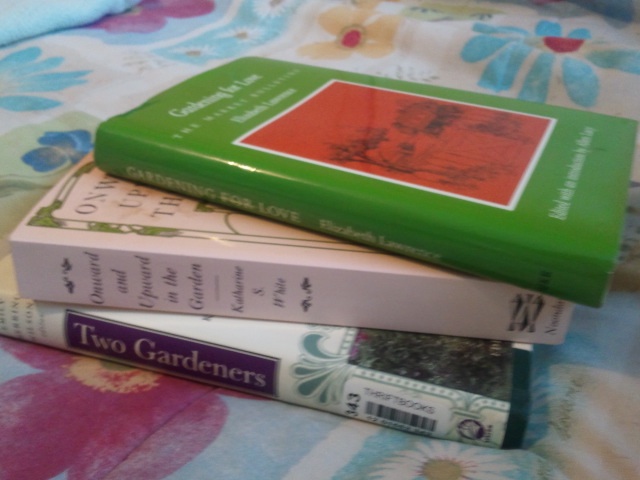
Of course, reading about these correspondences now, in 2012, I can’t help but think about the changed landscape of letters. I’ve never been very good, myself, at putting literal pen to actual paper, let alone following through with a stamp. Take away my keyboard and I go mute. We talk to each other now in blog posts and comment boxes, and in emails, IMs, texts, tweets, status updates—and this thrills me. I’m not a communications neo-Luddite. I love that we have so many ways to connect, nowadays. Still, it’s hard to imagine a collection of emails filling me with the same kind of soaring joy I feel at holding the White-Lawrence correspondence in my hands. “Dear Miss Lawrence,” writes Katharine in reply to Elizabeth’s first missive, “it was delightful to get your your letter…”
Yes, it really was. Now if you’ll excuse me, I think I’ll go read letter number three.









